Greasing the Gears: Departmental Structures in Modern Mining
Although specific departments may not always be named in mining companies, tasks are inevitably grouped and assigned to individuals or subcontractors. Let’s create a mining company that is nearly unreachable, with departments from various disciplines and personnel united by the same motivation to achieve their goals.
Click on the department name to view the section.
1. Eploration Geology

When evaluating an exploration license or conducting exploration activities, a lead “alpha” personnel generally undertakes the burden of interpreting and making decisions on the project. Rather than traditionally conducting their work in 2 dimensions, it is important to start by selecting a software to examine all structural elements together in 3D with an innovative approach. With this habit, meetings to be held on the data obtained in the field from the youngest project personnel to the most experienced will create a huge accumulation of knowledge. Because instead of blindly obtaining data, all personnel will take the initiative around the structural environment that has been consciously discovered in 3D during the process and will allow them to obtain critical information while in the field.
Before starting work, you will need to obtain a point cloud (topography) and aerial photo of your entire work area using a “drone” with an “RTK” plugin. Thanks to developing technology and software that makes the job easier, this process, which is no more difficult than driving a vehicle, can be done by everyone in your exploration team when suitable weather conditions are met.
It is important to ensure that all geologists you include in the project team have basic knowledge of the projection system used. In addition, it is necessary to note that in order not to be in a constant dilemma in data recording and correspondence, it is necessary to ensure that your team adopts the standards determined at the beginning with a very high level of discipline.
It is very useful to carry a simple short wave radio that does not require a licence for use in the field. You can use this communication method in many subjects, from the place where the driver left you at the upper level before field work, to the description of the meeting point where the cellular/phone connection is lost in the valley, or to an emergency call.
In the regional options of your PC/WS's operating system (Region > Additional Date, ... > Region > Additional Settings), make sure that the decimal symbol is a dot (.) and the digit grouping symbol is a comma (,) (Example: 1,234,567.89). It is sufficient to make this setting in this way once. In order not to have problems in 3D software, office program and reporting files, interdepartmental communication and numerical data in the future stages, make all personnel adopt this with a strict discipline.
2. Underground Mine Geology
In the sector where production efficiency and operational needs are increasing, the value of geology in underground operations is increasing day by day. It is quite difficult to provide justice in this shift work, which usually involves many personnel. If you can create basic performance indicators and manage to place all work on a numerical function, things will go well, because there is always the first, second and third.
In order to clarify the location of the orebody left around the existing gallery underground and to test all possible potential, it is necessary to drive additional drilling/exploration galleries or drifts. There is also a possibility that there are secondary zones that you miss or pass with low grade by drilling from these galleries. You can obtain data that will facilitate the interpretation of lower-upper level lithological contacts, especially for ore bodies with massive lithological distinctions formed in structures such as quartz, metal sulfide, orthomagmatic cumulate, by using georadar (GPR: Ground Penetrating Radar / ground radar) applications. Even if you miss boudinage and massive structures by drillings, this method can play a role in your interpretation with lithological distinctions, as it will provide you with uninterrupted continuous scanning. You can also apply this very low-cost method to the side walls or ceiling of your fortification and obtain useful results.
Every point you will mark as a geology meter in the underground gallery is very important; because all departments will base their addresses on these meters you mark. Considering that the points you mark with spray paint will be covered with dust and disappear, especially nailing symbols or solid objects to the "+00" starting points and edge points will make it easier for everyone.
If you have a consistent orebody model made with experience, you can design your grade control program within a systematic plan, and make a cost reduction and work flow plan. No matter what the commodity is, you do not have to sample at every face in underground drifts. In addition, you can increase the standard sampling interval width in the channel samples you make, and save the number of samples and the time you will spend on sampling. The consultancy you will receive to create or improve these parameters, which affect many issues from ore production to resource modeling, from grade control to process plant performance, will reduce your production costs and help you become faster.
In your PC/WS's operating system's regional options (Region > Additional Date, ... > Region > Additional Settings), make sure that the decimal symbol is a period (.) and the digit grouping symbol is a comma (,) (Example: 1,234,567.89). It is sufficient to make this setting once. In order not to have problems with interdepartmental communication and numerical data in later stages in 3D software, office programs and reporting files, make all personnel adopt this with strict discipline.
3. Open Pit Mine Geology
In addition to monitoring the weather conditions for grade control and production, photograph the slopes that are cleaned and moistened after heavy rain. Monitor the slice (aka cross cutting excavation of orebody through the "grade control line" on the level) production, especially in high-grade regions, at the beginning of excavation. Regions with high grade will always follow an anomaly tradition during the ore formation phase; therefore, you can probably observe the most recent thrust, slip, sudden change of structural directions and deformations to the current in these regions.
It is important to detect fault zones that are not cut in drilling programs, that are parallel or that are neglected for any reason in drillhole logs, on slopes during pit production. Do not wait for the faults to clearly show themselves on slopes; remember that all slopes will be covered with dust. Follow the slopes visually by walking on the steps/benches after heavy rain. Make evaluations on a centimeter scale during the periods when the highest rainfall is expected during the year, considering the climate conditions, using radar geotechnical monitoring methods or coordinate measurements of survey. Small differences in time will create significant contrasts and will indicate the existence of a problem.
In your PC/WS's operating system's regional options (Region > Additional Date, ... > Region > Additional Settings), make sure that the decimal symbol is a period (.) and the digit grouping symbol is a comma (,) (Example: 1,234,567.89). It is sufficient to make this setting once. In order not to have problems with interdepartmental communication and numerical data in later stages in 3D software, office programs and reporting files, make all personnel adopt this with strict discipline.
4. Drilling

After removing the cores from the inner tube, while they are still damp, remove all drilling mud or clay coating, if possible, do it with only pressurized water without using a brush, you can use small-sized charged water compressors for this. Otherwise, it will be necessary to spend much more labor, time and water to remove the layer/coating that dries and becomes a crust until it reaches the coreyard. Cores that cannot be completely cleaned prevent important observations from being made and may lead to the neglect of areas that need to be sampled. In addition, it prevents observations in core photographs, which are extremely critical.
Keep drilling progress records meticulously and add them to the logging columns. Regular notes taken effortlessly, especially water leakage, flushing, diamond change, difficulty of the machine during maneuvers, etc., have always played an active role in the planning - operation stages and in questioning sampling reliability. In addition, processing the records kept with easy formulas will ensure justice among drillers and optimize performance and consumable consumption. Having these records easily accessible digitally will not only save time but also prevent laziness and negligence during the evaluation.
5. Stockpiling
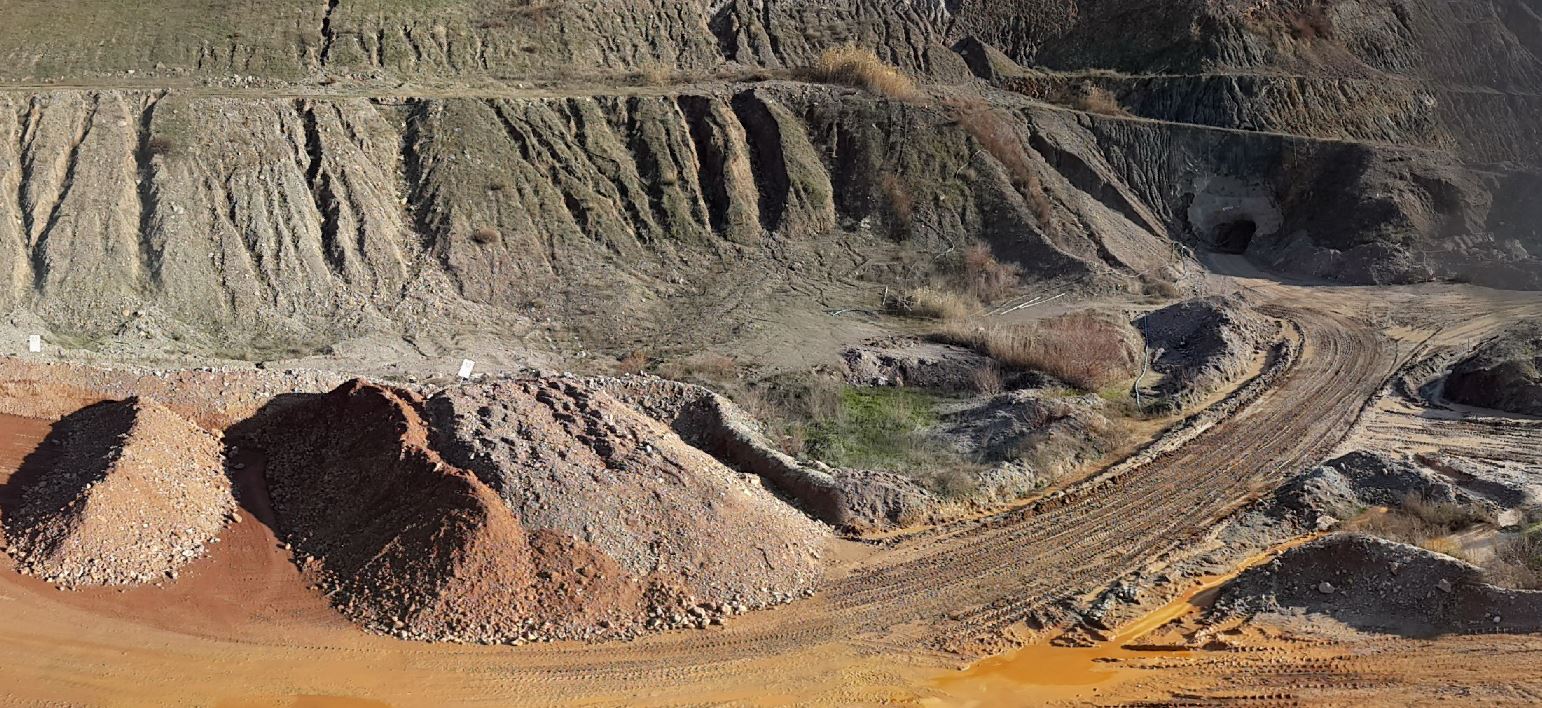
If we assume that you will make the measurements in cubic meters, remember that the stocks you pile will become tighter and lose volume after a certain period of time. When you multiply the bulk density by the measurement volume, you will obtain a lower tonnage than it should be. To give a rough example, a 13-meter-high pile of approximately 200,000 tons will experience more than 1 meter of subsidence in 6 months. When you multiply it by the same bulk density, a difference of more than 10,000 tons will occur. Although it is an issue that you need to take precautions according to your operating and process plant feeding conditions, you can reduce the margin of error in stocking by taking measurements in stages and marking the levels.
Be careful where you place the piles. Large-tonnage masses that you place on the edges of the pits or on the fillings (waste) made on the valley/fault can move the rock blocks they sit on along the faults by underground water.
If you take samples to record values such as shipping or haulage moisture, stock moisture, feed bucket moisture according to your operation and use their analyses in calculations, you can see that there is a decrease in pit production-process feeding-final product sales tonnage differences.
It is useful to constantly check the ground survey measurements where you place the stocks; because if the bucket dives too much into the feed face base, you may even be feeding waste to the facility. You can lay a membrane as a level marker in the low-grade ore that you make a base for the stock area as a visual warning.
If your stock area is narrow, you can save space by leaning different stocks against each other. For this, you can lay a membrane on the stock slopes where the feeding action is low in the highest piles and fill the gap with a different type/quality ore you want by casting.
Haulage scale calibration should not be neglected; it should be repeated every day or after a certain tonnage has passed.
6. Coreyard / Core Shack

The coreyard is not only an area where diamond drilling cores are processed. It is a work area where geology departments take shelter in adverse weather conditions and the laboratory where they extract the most data as a point. Core logging, photographing, core cutting, sampling, density testing, pulps/core boxes archiving and many other processes are carried out here. Many critical data obtained by geology from exploration to modeling, from mineral production to development pass through here. Order, meticulous workflow and personnel discipline are extremely important in your coreyard. "Core Shack" is the most essential element for companies conducting exploration activities.
Drillhole cores are the most important witnesses to your project and these core cases/boxes will be processed again for confirmation purposes in your project sale. In the event of the slightest error you detect in your case acceptance procedure for the coreyard, request the driller performing the drilling to personally correct the errors by "detaining" him.
Exploration data must be obtained with the utmost confidentiality. An experienced eye of a stranger detecting your drilling cores or sample results can cause major strategic problems that you cannot predict. Do not allow unauthorized personnel into your coreyard and drilling site.
Mineralizations enrich many metals that do not yet seem economical, apart from the main commodity. Preserve the cores that you will apply for possible opportunities in the future as well as possible. Regardless of the material of the cases where your cores are located, the writings on them will tend to fade after a certain period of time; the material will stretch and become unrecognizable as they are kept on top of each other. Have a stacking limit or metal-supported slots made for each case stack. In addition, during idle times of your workforce, you can have the sample personnel at least emboss (numarator) the drillhole names and case numbers on small metal labels and attach these tags to the cases. Then you can send the core cases to your main storage area.
Make sure that the core photos are standard and clear. It will be important to do this important job meticulously in the near future, because exploration activities will advance with "automation", be prepared for this now.
7. Resource Modeling & Reporting

Remember that the concepts of resource and reserve are of critical importance; although these may seem like everyday words, they are actually a “term”. It is essential that the data presented with such words be known by the audience that will read the reports written as a result of the modeling. Because the value and potential of the investment to be made are hidden in these kind of words. For this reason, ensure that all technical teams that obtain the data, from the investor to whom you present the reports, understand these concepts in their minds.
During the creation of the resource model, it is very important that the professional who will create the solid mass (closed wireframe) works full-time in the project and has mastery of all structural geology. In the past, due to the lack of personnel with interest and mastery of 3D software, companies have found it more attractive to have their projects modeled by a central management. It should not be forgotten that the thoughts of a geologist who can imagine the orebody in his project are very valuable during the creation of the basis of the model. In this case, communication between resource geologists and mining/project geologists can only be provided in a 3D digital environment. Mining/project geologists need to know that every point they will use while creating the solid mass should be meaningful. It should be ensured that mining geologists or exploration geologists who have completed their professional foundation know their limits for modeling. This will be a great advantage.
It will be useful to ask mine geologists to grade, code and name the 3D drawings of the faults encountered in production according to certain criteria. If the slip of faults are not understood in some floors or if this situation is reflected as a problem in the grade estimation process, you may realize that the faults that show themselves with more pronounced slips horizontally as you continue towards the lower floors are actually caused by vertical slips at the upper levels.
The needs of resource geologists are very important for grade control program optimization. We mentioned in the "mine geology departments"; taking samples at every progress face often creates unnecessary expense and loss of time. You can determine the sufficient and necessary minimum sampling density for reserve estimation in the resource model together with the mine geology departments. In this way, the grade control process can be managed even by taking a single sample from the entire face in sections that are unnecessary in many progresses.
If you are in the project evaluation phase, you should check the parameters and variograms used for estimation, in addition to checking the drilling and sampling data. Also, if used in estimation, the preferred anisotropy angles and their reasons should be interpreted together with the orebody formation geochemistry and dynamics.
In the regional options of your PC/WS's operating system (Region > Additional Date, ... > Region > Additional Settings), make sure that the decimal symbol is a dot (.) and the digit grouping symbol is a comma (,) (Example: 1,234,567.89). It is sufficient to make this setting in this way once. In order not to have problems in 3D software, office program and reporting files, interdepartmental communication and numerical data in the later stages, make all personnel adopt this with strict discipline.
8. Underground Mine Planning

Although the primary purpose of drilling is to cut or intersect ore, alteration and geotechnical data to be obtained from the waste rock are also extremely necessary. Drillholes for exploration are planned to cut the ore body in the shortest way and at the steepest angle possible. Thus, since the most data about the rock will be on the slope side of the ore body; shaft, ramp and access galleries/drives can be preferred inside the hanging wall block for the operation design.
Let's go through an example: During the formation of hydrothermal mineralization, acidic hot water/steam will want to rise perpendicularly against gravity. Considering that it can often cause argillization (clay alt) in the rock on the slope side, the rock strength will be quite low. On the other hand, it is an advantage for the access galleries to be in the hanging wall block for future orebody development drillholes to be planned from underground.
It will be useful to pull a chair next to the geologists in front of the screen during the exploration phase and talk about your plans in order to plan drillholes in the right places on the footwall side. Worst case scenario, you have a coffee, decide the league champion, and take off.
9. Open Pit Mine Planning

Unfortunately, operation legal permits are difficult to obtain; on top of that, there are dumping areas of dumping waste and ore that are crammed into a narrow area in order to save on dumping waste costs. When the steep topography is added to this, millions of cubic meters of waste generally piled close to the open pit boundaries trigger major slides along fault surfaces. The reason is often not understood, but it is very important to get the opinion of someone who will conduct geotechnical and geological studies that can predict mass movements during the planning phase. The main reason for most open pit or stacking accidents is covered up by the precautions not taken when cracks in the soil are detected. In fact, the result is “cracks”, and the reason is “precautions not taken” during the planning phase.
10. Underground Production Shifting

In order to see the structural settings of the orebody and the production plan and to be able to imagine it later, if possible, visit the technical office or geology department at the beginning of the week before the first shift. If you make it a habit, you can get the whole picture in your mind even when you look at the computer for a few seconds and make the most accurate decisions where you need to take the initiative.
It is important to keep a diary of the arrangement you have taken over, the decisions you have made, the performance data of your shift, and what you have said to whom if necessary. If you save these notes you have kept in an Excel file at the end of the shift as rows with person, date/time, gallery, progress meter (geology meter), event/subject, etc., you can create a conscious order with backward search/filtering. Every captain has a logbook.
It is important to work in coordination with geologists when drilling blast holes in places where high tonnage/bulk production will be carried out between levels or sublevels, long walls or similar places. You can perform the most efficient blasting with the information you will receive about the ground conditions to be drilled by scanning records such as face maps, drillhole datas, and previously identified faults. Of course, do not forget that for this, the planning department of the holes to be drilled must share the hole sequences and addresses with everyone involved in a standard manner.
11. Open Pit Drill & Blast

Being sensitive to in-ore blasting, which was not considered important before because it slowed down the workflow, can now be solved quickly with the increase in software dominance. When making hole design, the survey (mapping) team should get the most up-to-date ore-waste or high-grade section boundaries from mine geologists and add infill holes only along these lines, which will increase production quality. If you do not want visually appealing footage at the time of blasting, these infill holes should be marked in different colors and the personnel should load without spoiling the pleasure.
Important: One of the blocks around important faults seen in the slopes can swell with the water it absorbs after heavy rainfall and move towards inside the pit. The rock becoming saturated with water and swelling due to its clay content will trigger the flow along the fault surface. For this reason, reporting and monitoring the water flows coming from the slopes will give you an idea of how long heavy rainfalls can activate such faults. As an example, mass movements in open pits around Türkiye are frequently observed in the late winter or spring months, when water-saturated rock is accompanied by heavy rainfall for more than 5 hours and is reported in the morning.
12. Mineral Processing Plant
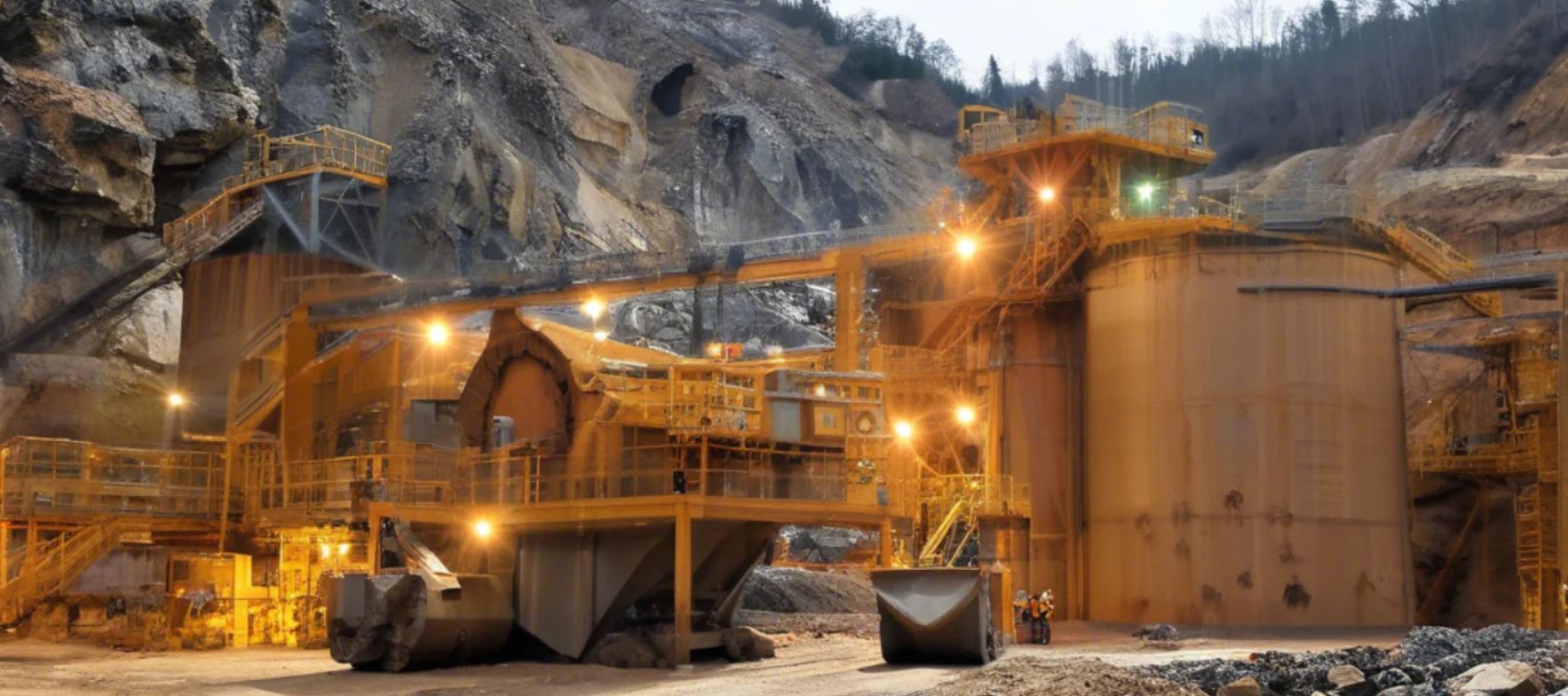
It is essential that there is constant contact between the personnel who carry out and supervise the metallurgical process and the mine geology or resource modeling personnel. Here, the mine geology department, which monitors the plant performance data daily, calibrates itself, assigns more accurate grades and improves the estimation method it applies. Therefore, the more you assist the geologists with your feed and waste performance data, the higher your process performance will be. Transparency always rules.
The presence of concrete floors and roofs in stockpiles will directly affect your crushing/grinding performance in rainy weather. Covering only the feed face with nylon in stockpiles is not a solution; remember that the material is sponge-like; every part of the mass will absorb water in the medium term. If the management insists on the roof, you can say, “Let's put a solar panel, it will pay for itself”. By the way, you can also cover the top of your tailings & dam with solar panels to make history.
13. Geophysics
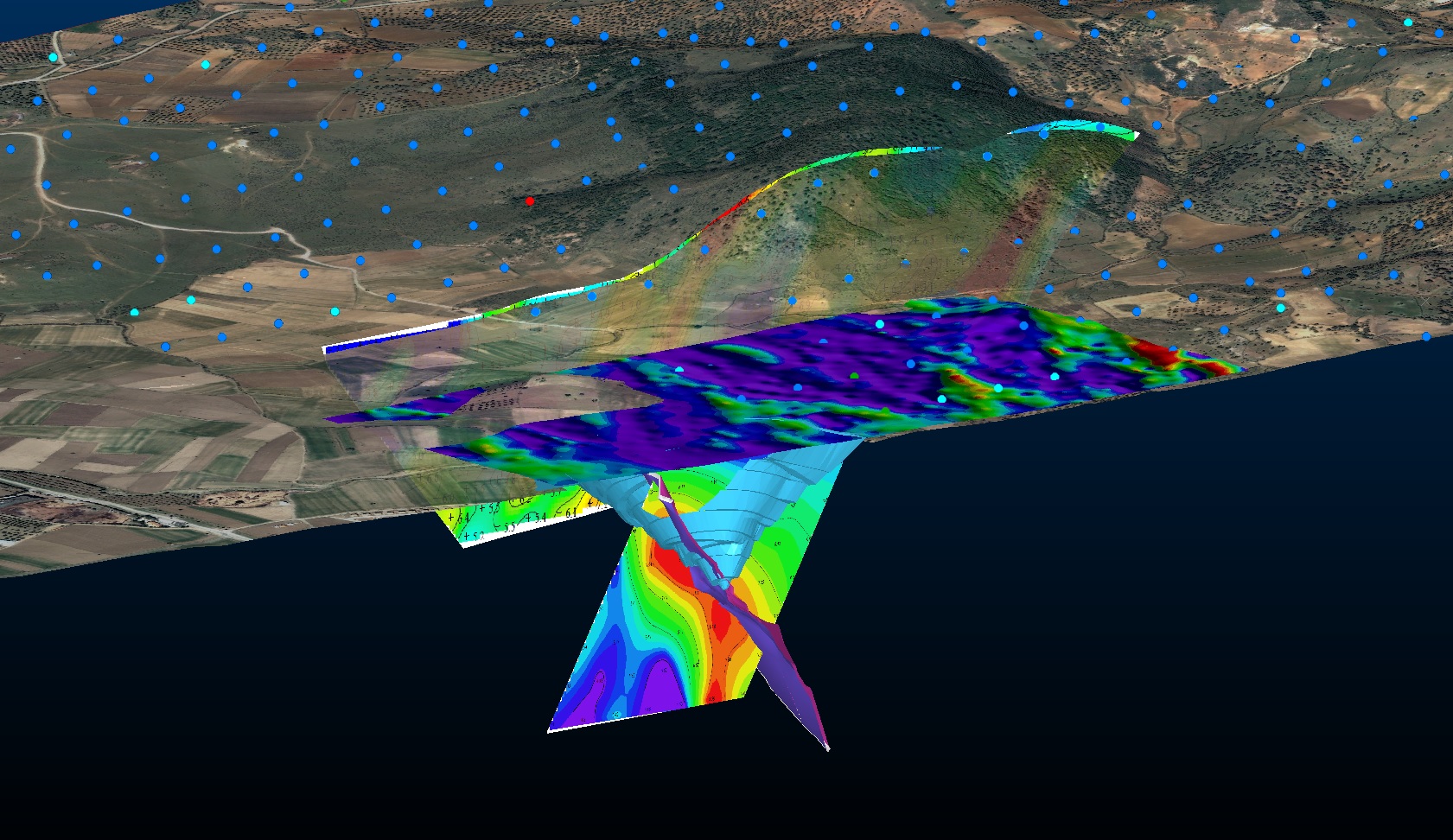
In the mining sector, methods of electrical resistivity - induced polarization (Res-IP) and maybe seismic for some hydrocarbons are used. Except for converting the obtained sections into 3D with software, geophysics science has not made much progress on these methods. It is essential to find many topics open to development in geophysics and to make investments; because there are not only hydrocarbons but also metals under the seabed. 😉
When interpreting the sections, it is useful to get help from a map of structural geology elements and from geologists. Because the region you describe as anomaly may be an alteration zone, and the anomaly you refer to as ore may be a permeable rock with a slightly higher water content. In addition, you may make wrong choices when correlating anomalies in different cross sections / lines.
It is obvious that the little-known georadar (GPR) can give very good results with insignificant costs by using lithological differences in underground and open-pit operations. However, mining companies need to try this method in order to find it useful, and it should be presented to the relevant parties so that they can try it. Probably the "problem" is been understood.
Although geophysical methods and sensors have diversified since World War II, it is still a big question that they have not spread to the base and become widespread in mining use. We hope that World War III will not happen and geophysics will gain the value it deserves, at least in terms of mining applications.
14. Survey - Mapping

The survey department employees, who are renowned among the best archivists, finalize the files they create and name them in the most appropriate way that can be sorted in the measurement date format (Example: year-month-day-location [241231TurkiyeTopoWGS84]). Indicating the coordinate system in which the file was created with a standard code in the naming format will prevent confusion (Example: ED50 for 6 degrees, year-month-day-location-Datum [241231TurkiyeTopoE6]).
As you know, the general software infrastructure in the sector is English-based, in order to avoid problems in terms of use in almost all GIS and 3D software, do not forget to write all file names and the folder names where you put your files in "English" characters.
In your PC/WS's operating system's regional options (Region > Additional Date, ... > Region > Additional Settings), make sure that the decimal symbol is a dot (.) and the digit grouping symbol is a comma (,) (Example: 1,234,567.89). It is enough to make this setting once. In order not to have problems with 3D software, office programs and reporting files, interdepartmental communication and numerical data in later stages, make all personnel adopt this with strict discipline.
The difference created by survey engineers, technicians and self-employed surveyors with their computer skills from the past is closing with the ease of software. This situation is driving them to learn the development process of aviation and photogrammetry on the surface and Lidar underground.
15. Occupational Health and Safety (HSE)
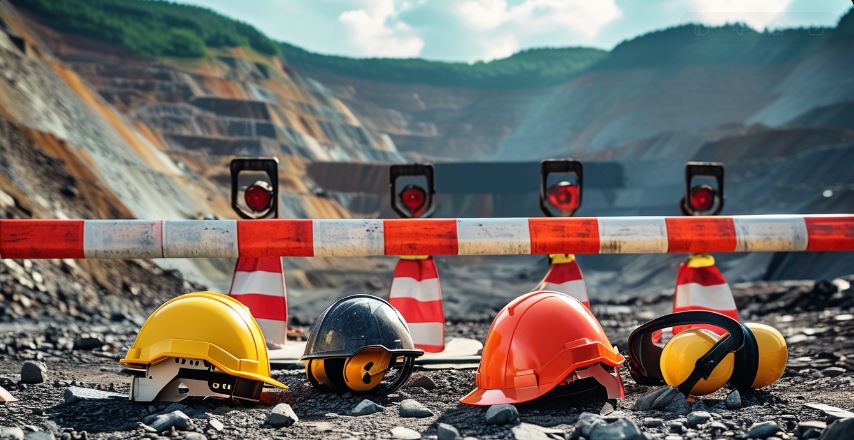
In mining operation sites, occupational safety departments have generally created a perception of “police” power. Unfortunately, even if the opposite is tried with the best of intentions, it does not seem possible to achieve successful results. It is necessary to proceed by accepting that this is a “de facto”.
The biggest obstacle to creating a culture is “experience”. As employees do the same job for years, their threshold for perception of danger increases accordingly. This situation is quite difficult for a new graduate or an OSH employee who respects his/her colleagues. At this point, the power that will allow them to eliminate the elements that prevent them from doing their job is documentation. It is a unique protection for everyone for employees to know that the step-by-step instructions for the job they do are written down somewhere already. Informing the employee that there is a law that they are responsible for in every job they do is the softest and most effective sanction power available for the job to be done correctly. During documentation creation, OSH personnel should ensure that the relevant points in the procedures and instructions are written in different fonts for the issues related to occupational safety. They should only read these sections in the procedures rather than all the jobs and conduct their inspections.
It is impossible to get the documentation ready; however, the company culture can create them. Having all the work they do written down step by step, from employee bending down, to operating complex machines, will also include them in this cultural movement and increase their motivation. If you complete the documentation and, if possible, put it somewhere that everyone can access whenever they need (a printed or server-connected computer, screen, kiosk, etc.), very productive discussions can be experienced and social awareness can be created.
Mining is one of the most dangerous job class, in a narrow space, with effort and qualified labor. In earthquakes, mining accidents, disasters and debris, all “miners” have always been and will be found first to rescue. They have to be found because there is no profession that can do search and rescue work better than “miners”. It is essential that all members of the selfless community who have devoted themselves to RESCUE groups and completed their education are registered with the state and additional benefits are defined. In this way, it will be possible to quickly assign and organize these heroes from a single center during civil mobilization.
16. Analysis Laboratory

Informing geologists and mining engineers on-site about the analysis methods used will prevent job blindness. A short presentation will be quite useful for the relevant departments to know the screening/detection limits of the commodity and methods, the handicaps that may occur within the non-analyte elements of the analysis, the types of analysis and institutions that the laboratory is accredited to.
Although studies in analysis laboratories are generally carried out within a strict discipline and initiative-free workflow, this meticulousness can be neglected in sample preparation areas. Access of unauthorized personnel to the sample acceptance area, personnel's mind being elsewhere, dust flying around, and elements such as open windows can cause contamination between preparations in the entrance section.
17. Quality Control

Every "successful work" done through a plan or instruction ends with the product obtained as a result of that job being of the same quality. Quality management departments should not forget this main motivation issue. It is essential to supervise the implementation as much as the written ones; departmental controls can be encouraged in various ways.
The more “Job Safety Analysis” (JSA) reports reach the job safety departments, the more deficiencies in instructions are evident. You can make inferences from these records.
“Document, procedure, instruction composing and form creation”, which cannot be purchased from outside and are only the production of company culture and traditions, are processes that take a long time and the concentration is lost at the slightest external factor during writing. In this case, explain to the relevant managers the necessity of taking the workload of the assigned personnel off their shoulders on certain days.
18. Business Development and Cost Reduction

It is often said that development is provided by the lazy, on the contrary, the hardworking ones may not see the opportunities or improvements due to the motivation to survive the existing successful process without any problems. If you have a well-functioning and problem-free system, you may have overlooked the long way you can go for development. In order not to leave a door open to possible negligence, define a business development representative personnel from each department to a professional "business development team" under a leader or consultant.
It is not necessary for the business development leadership to be done by someone who has direct knowledge about the sector or the jobs. The analysis habit and skill of the leader will scan the steps of any business line from the right perspective and direct them to the potential. You may think that the employment or extra expense you will make for the renowned “Lean + Six Sigma” will bring much more to your company.
19. Environment (HSE)
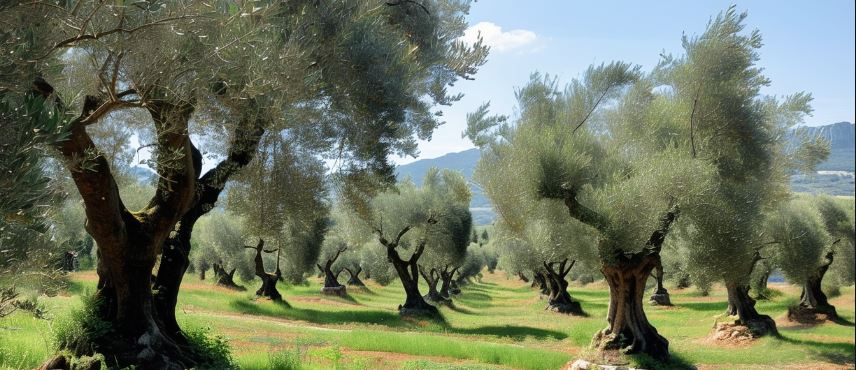
Mining usually starts 1-0 defeated in the face of arguments that serve different purposes under the guise of “environment”. If possible, it is essential for many companies to come together on a local scale and respond in kind, because it should not be forgotten that everyone is in the same boat. It can be started by rehabilitating a certain part of the completed sections of the operations carried out in stages with fast-growing trees in order to create temporary or permanent recreation areas. While it is the duty of Public Relations to decorate these trees with lights and welcome the public with picnics and festivities—not just during the day, but perhaps in the evening—the importance of the rehabilitation strategy becomes evident here. Maybe the “1st Traditional Open Pit Festival” will be celebrated enthusiastically with eggs and bats, but the taste of burger and drinks under the shade of a group of fast-growing trees will undoubtedly remain in the mind after the second one.
It is necessary to be sincere about waste management. Is the benefit of separating pet bottles and paper at the source worth the visual pollution created by multiple alternative garbage bins?
20. Public Relations (PR)

We know the impact of advertising campaigns created through social media communication on public opinion on almost every subject. Mining companies or company associations need to manage perception by assigning professionals to the mining sector, which is extremely inactive in this regard. The main plan that needs to be focused on here should be to nurture the motivation of young people to make a profit from mining, rather than convincing a small group of middle-upper age groups that have an outdated negative view. It is necessary to be the subject of organizations in areas such as robotics, e-sports, content creation, and music, and to encourage young people to have a positive view of mining by giving them a share of this budget. Since laws and decisions are shaped by the traditions and tendencies of the people, it is important to take these steps in order not to be defeated by the public opinion formed by young people who have a negative perception of mining in the future.
It would also be useful to take a look at the "18. Environment" topics.
21. Human Resources (HR)
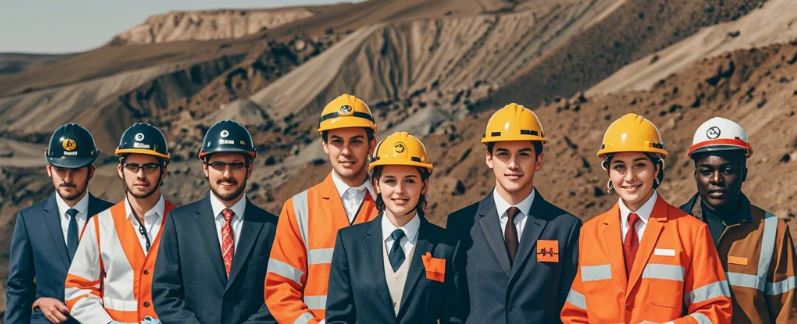
It is generally quite difficult for personnel orientation and recreational activities, which often appear fancy, to gain the recognition they deserve in working life, because it is not understood what you lose when you don’t engage in them. After experiencing the routine challenges of work life, people who are distanced from communication may develop latent hostility toward each other. When you add unnecessarily extended working hours to this, you leave employees with no other option after finishing their tasks. Communication provided in the right way between employees from different departments will foster sincerity, tolerance, and respect. For friends who usually eat their lunches at the same table, let’s set aside the one-hour dining programs with managers; even a casual coffee after work seems more reasonable.
The 7/24 working capacity of the sector is a great advantage that is not realized much. Instead of weekend breaks, a block work/holiday arrangement will allow you to keep your employment pool quite large. Having the widest possible area where your employees reside will support your company's perspectives from different cultures and your corporate work discipline. With additional benefit arrangements that can be made more economical with company agreements such as block vacation (3-10 days), round-trip flight tickets and short holiday accommodation expenses, you will attract quality and optimum cost employees from a very wide area to your job postings. Personnel who are in rotation and have peace of mind will have fewer problems, and the culture they bring will bring about a healthy competition for more productive work.
Consider interns as "employees".
22. Information Technologies (IT)

Archiving and retrieval from archives are critical issues in the mining industry. With extremely volatile mineral prices, data that you think is useless today may constitute priceless assets years later. The job of almost everyone working in your company is to create and save data and retrieve it when necessary. Therefore, the importance of a solid network structure, ease of connection to this network and redundant network storage is quite clear.
In periodic reports such as daily, monthly and annual, if many departments enter data into the same file at the same time, this may cause the server to slow down. In addition, problems with overwriting in the file where the staff unknowingly enters data may lead to incorrect reports. It would be useful to talk to department managers to allow access to multi-user folders or files only to authorized persons.
After saving the data to the server, if many documents and their backups remain there for years without being reviewed, this increases the complexity. This situation may cause the staff to waste time with other files that interest them in searches made to find the desired file in the past. At worst, “anticipating that you will not find what you are looking for” may render the entire archive and the labor of the staff who have worked for years meaningless. It is important to assign responsible personnel to each folder opened under the server and to supervise this process. It would be appropriate to discuss this issue with department managers.
Finally, the resources you will spend on modernized and fast equipment will contribute to the smooth and error-free completion of the job.
23. Administrative Affairs
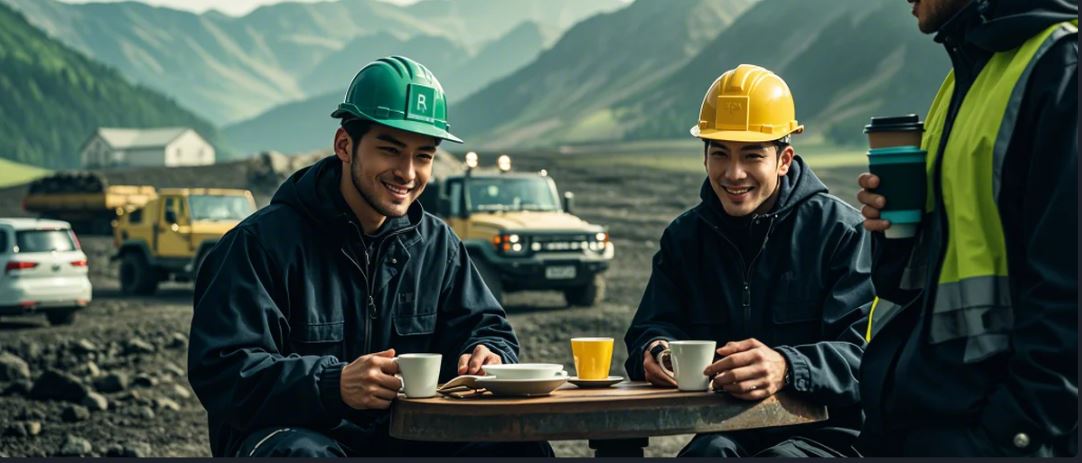
For vehicles running on fuel, the battery is often an invisible source of trouble; it can often fail at the most unexpected time. A USB/powerbank-sized, 12-volt outlet rechargeable booster device that you can place next to your spare tire can help you fix the problem without waiting for remote assistance or having to make long cable connections to another vehicle.
In the event of an unexpected flat tire in the middle of field work top of the mountains, you can continue on your way in a few minutes with a simple tire repair spray that you place next to your spare tire, so you can do your work without needing any other support.
Hygiene shows the respect that every company has for its personnel. Leaving common areas such as toilets and changing rooms dirty can reflect the importance that companies attach to hygiene. In order to prevent these habits, everyone needs to know that they are in the same boat. In the event of unhygienic situations, sanctions can be applied by having a staff member inspect the common areas throughout the day and report any irregularities. In this way, the staff will acquire the right habits in a short time. Such solutions are necessary to end the outdated treatment of common areas.
Attention should be paid to the gloved hands of the staff collecting office and outdoor garbage. If he opens doors with gloved hands, he may also be picking up trash with the same hands. This should be considered for anyone who uses gloves.
24. Operations Management / Project Management

Inconsistencies and errors can often be seen in data files such as production, ore stocks, measurement tons, and grades where your staff enters data and creates tables. Not being able to predict when errors started and not being able to be sure of data accuracy in interconnected files can be quite annoying. In cases where corrections are not made despite warnings, saving a copy of the entered files in the same place and making entries simultaneously in the original and the copy offers an important solution. In addition, you can confirm each data notification by printing two copies. This method will not only ensure accuracy in data entry and presentation, but will also support the staff in gaining correct habits.
It may be useful not to stick to taboos when organizing staff working hours and places. For example, considering the time that someone working from 08:00 to 17:00 on weekdays will lose in morning and evening traffic, arrangements such as determining 07:00 to 16:00 working hours or shortening lunch hours and ending the shift early can be made. Alternatively, instead of working 5 days a week, arrangements such as working 20 days straight and block holidays can be considered.
Equip the workers and personnel you send to the fair with authority for purchases, so that they can get prices, discuss technical details, test, add-remove parts of stuff they need from the stands they visit. If you give the employee the authority to vote for various types of purchases or the right to direct election when they return to work, visiting the fair will be different from resting. In this way, more fluid communication will be established between vendors and your personnel, ensuring that your needs are directly met by the producers.
You can make your current announcements by setting up information screens (Kiosk etc.) in the areas where the personnel wait for shuttles and transfer vehicles, rest or eat, and ensure that they are aware of documentation such as instructions, forms, work safety and environmental issues during these idle times. It will also be useful to add access and print opportunities from the screens.
It is useful to review this as well.
You will definitely find an answer to one of your questions in the "FAQ".
25. Board of Directors / Senior Management

Mining companies are classified as Tier I, II, or III by international investors, particularly for publicly traded companies on the stock exchange (*SX), based on their operational size and global effectiveness. Even if you are still in the investment evaluation phase, you can determine your classification and develop your strategy in alignment with your budget and the licenses you plan to obtain.
If we need to create a further sub-classification, we can divide it into three categories: exploration companies, exploration-extraction companies, and sales companies, or exploration and operation companies. In the first category, you can obtain initial licenses, assess the ore potential in those areas, develop it to a certain level, and then sell it to generate profit from mining. In the other categories, you will need to operate the identified potential and sell it as is, or refine it into a final product while earning income. Simultaneously, you will need to secure additional licenses and continue mining exploration in another branch. In any case, determining the 'cut-off grade'—which depends on many dynamic parameters—is crucial. This will help you assess whether the resource you have will actually be profitable and determine its real value.
Before each quarter, gather short-, medium-, and long-term price expectations from your investment advisors for each factor affecting your costs and income. Based on your expectations regarding the commodity prices of interest, collaborate with your advisors, exploration leaders and operations directors to develop a strategy similar to portfolio management. The foundation of your strategy will be determined by the risk level associated with choices made from the targeted license/project basket provided by your exploration leader, ensuring sustainability. This risk level will be assessed through your operations director's cost and feasibility report.
At the core of all these considerations is the budgeted commodity; your income and expense prices. For example, you might profit from a risky investment by anticipating that a project with currently uneconomical grades will become viable in two years based on your price targets. Alternatively, you could include a ready project in your portfolio by predicting a low profit margin to keep operations running or enter mining.
In any case, understanding the true value of the license or portfolio is crucial for developing an effective strategy. Relying on statements like "trucks and wagons of goods come out of this mine!" can lead to empty projects, while you may inadvertently overlook a valuable opportunity. Seek technical consultancy support from your board of directors to make informed decisions.
Make plans aligned with your strategy, set clear goals, and establish timelines and deviation rates. Achieving specific numerical goals will motivate your entire team, foster the creation of new objectives, and drive progress.
Prepare daily, weekly, and monthly reports presented as numerical tables and chronological graphs to ensure all departments are aligned. Analyzing recent performance through these visual aids is an effective problem-solving approach.
Support document management and instructions, supervise personally, and communicate to all personnel that their contributions are valued.
If you believe you have identified the right strategy, proceed with determination.

You can lay a foundation with Smart Investment Strategy in Mining for Startups & On-the-Go.
You can reach all other articles here.
You will also find an answer to your question in "FAQ".
26. Consultant | Advisor | External Auditor

Depending on the size and goals of your mining operations, hiring a highly qualified workforce can be quite costly. In this case, collaborating with trusted consulting firms can lead to success without leaving you to manage alone, utilizing the most modern methods and immediate motivation. The importance of know-how is crucial here; with their experience and expertise, consulting firms can enhance your processes, provide essential strategies, and support you on your path to success. Such partnerships will help you use resources more effectively and achieve your mining business goals more quickly and reliably.
You can access the articles here.
Also, you will definitely find an answer to your question in the "FAQ".
Subjects discussed in this article may overlap with your mineral exploration, modeling, mining operation and business development issues and may provide solutions for those. However, remember that various factors specific to your business may bring about different challenges. Therefore, seek support from expert consultants to evaluate all data together in order to convert potential into profit most efficiently.
Should you have any questions regarding the articles or consulting services, please don’t hesitate to get in touch with us.
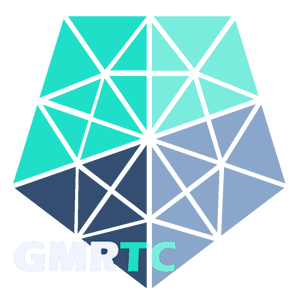
GMRTC Mineral Exploration & Modeling & Operation Consultancy
Istanbul - Izmir - TÜRKİYE
SITE MAP
CONTACT US
Before quoting or copying from our site, you can contact info@gmrtc.com
All elements (texts, comments, videos, images) on the GMRTC website (www.gmrtc.com) are the property of GMRTC unless otherwise stated, and are published to provide insights to interested investors, professionals, and students. Any detail that may arise during your process will affect the subject matter you are interested in on this website; therefore, GMRTC (www.gmrtc.com) is not liable for any damages incurred. It is recommended that you consult experts with all your data before making any decisions based on the information provided.
